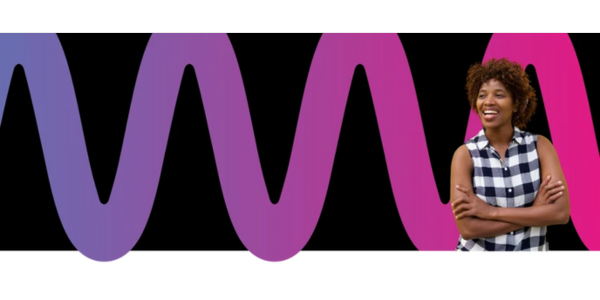Top 3 Language Industry Trends for the healthcare sector in 2021

The past year has been rough, and 2021 is the subject of quiet hope for many, as vaccines begin to be rolled out and we may be able to begin discussing the prospect of recovery, as a pose to survival.
For the translation industry, the pattern is no different. 2020 brought with it a series of challenges and shifts in the way we work, with our world becoming almost as remote as many others. The predominant translation industry trends for 2021 will bear the hallmarks of some of these changes.
The past year has been rough, and 2021 is the subject of quiet hope for many, as vaccines begin to be rolled out and we may be able to begin discussing the prospect of recovery, as a pose to survival.
For the translation industry, the pattern is no different. 2020 brought with it a series of challenges and shifts in the way we work, with our world becoming almost as remote as many others. The predominant translation industry trends for 2021 will bear the hallmarks of some of these changes.
- More reliance on Machine Translation
Pandemic or not, the use of Machine Translations has been on the rise for some time. The software continues to become smarter, faster and more predictable, and our use of it becomes more intelligent and efficient as time goes on.
Through 2021, this pattern of continuous growth will stay its course. The Machine Translation market was valued at more than £410 million in 2019, and is expected to reach nearly £780,000 million by 2025.
Software alone can deliver increasingly positive results, but as it is used more and more for high-precision applications, human translators are still playing an extensive role in the translation process. We are becoming better at understanding when and how the human element is required, honing the efficiency of the process. The efficiencies deliverable with the use of Machine Translation are likely to play a crucial role in global recovery through 2021 and beyond.

Machine Translation will open new markets and bring new consumers to businesses at a crucial time, this is especially important for the UK as we open our trade prospects to the wider world post-Brexit.
2. Remote Interpreting
From the beginning of the first lockdown, the way we work as a whole has shifted dramatically to remote working, with many of us adopting the work-from-home hermit lifestyle. This is no different in the world of interpreting.
As COVID-19 has made face-to-face interpreting an essential-only form of work for interpreters, telephone interpreting and video conferencing software has allowed for the rapid uptake of remote interpreting. This has been especially crucial for the NHS and healthcare industry, allowing patients to continue to access services at a time of huge demand.

This is likely to continue to be the case into 2021, as, although vaccines are beginning to be distributed, it will take some time before enough of us are vaccinated whereby personal interactions can once again become the norm. Also, as we face new strains of the virus and disruption to every aspect of life continues to wreak its own kind of havoc, remote video and even phone interpreting will remain the safest option for many situations.
3. Medical Translations
Medical translations are expected to be a major feature of the translation industry throughout 2021, as they have been throughout 2020. We are only at the beginning of the rollout of various COVID-19 vaccines which themselves come from all corners of the world. Administering them to a scale which keeps all of us safe will require a huge international effort.
This, in turn, means a huge volume of written material needs to be translated alongside it to ensure patients are communicated with accurately and effectively. As you can imagine, medical translations are especially imperative given the nature of the products they accompany. Mistranslated information could literally cost lives, so making sure every care is taken is crucial. Medical translations will play a considerable and important role in the distribution of the vaccine and continued efforts to tackle the virus throughout 2021.
Additionally, on the front lines of COVID-19 treatment, face-to-face interpreting will continue to be a vital service, albeit with the addition of a lot of PPE. The presence of an interpreter in hospitals ensures that everyone, no matter their language, is able to access the life-saving treatment they need and often faster. This helps reduce stress on the NHS and provides equality of care.
2021 is shaping up to be an important year, and the speed at which the world recovers from COVID-19 hinges on its events. One thing we are absolutely certain of, is that translating and interpreting will be as important as ever in allowing progress this coming year.


Elliot Glynn
Dec 4, 2020Related Services
.png?width=600&height=300&name=Untitled%20design%20(2).png)
Interpreting
Interpreting is where conversations are relayed from one language to another. How those conversations are conducted is where we add value. From in person meetings to remote video interpreting including British Sign Language, let us help you find the right solution.

Translation
Our global network of translators work around the clock in over 350 languages and dialects. Working across an extensive range of industries, our Word360 sector specialist experts translate everything from medical, pharmaceutical, legal, cosmetics, charity to marketing, e-learning and many more
.png?width=600&height=300&name=Untitled%20design%20(4).png)
NHS
Word360 has been delivering interpreting and translation services to the NHS for over 30 years. In doing so, we have developed unique solutions that improve the patient experience, reduce waste and enable staff to focus on more important tasks.
.png?width=300&name=Website%20-%20Featured%20Images%20%20(16).png)